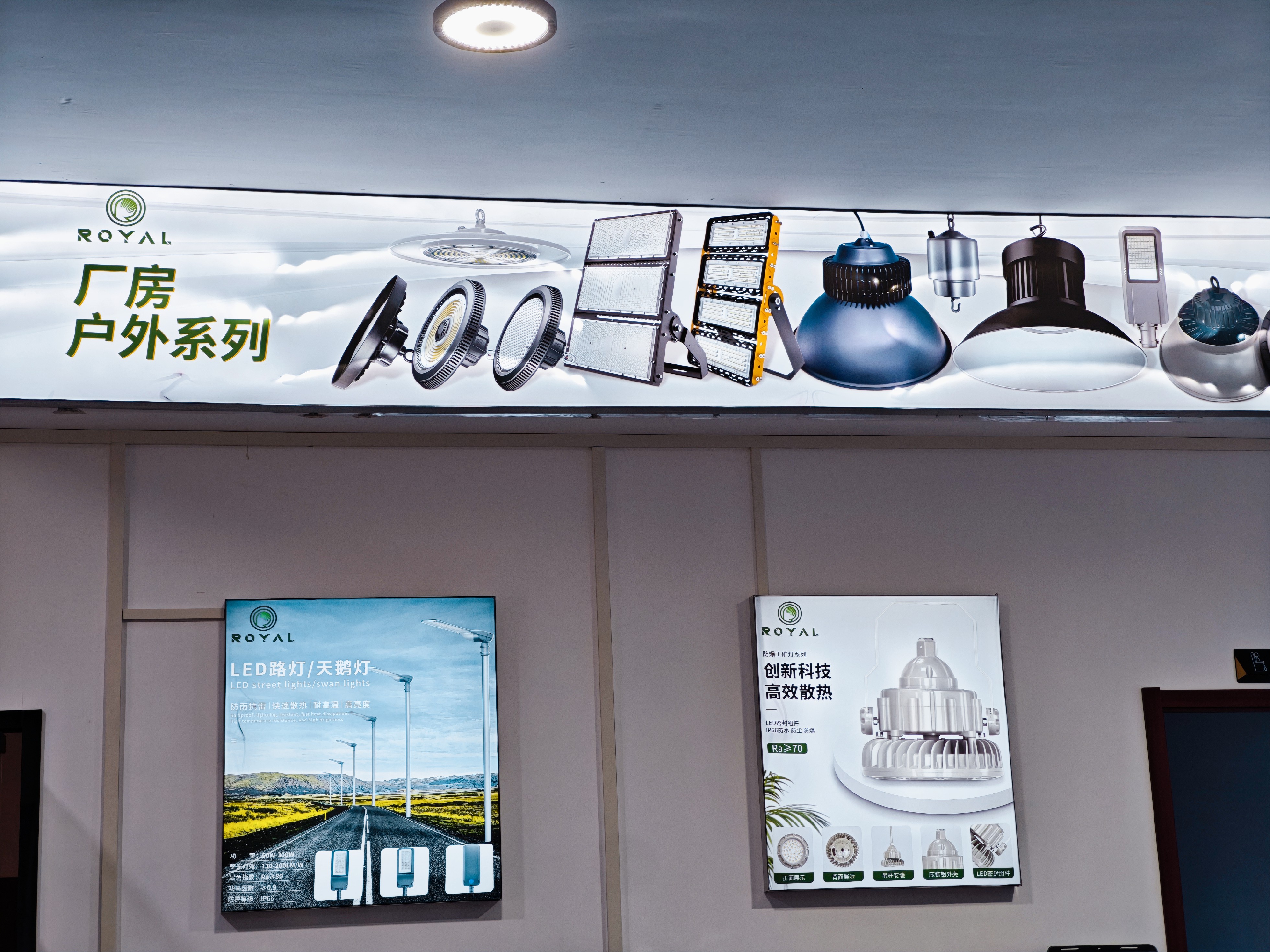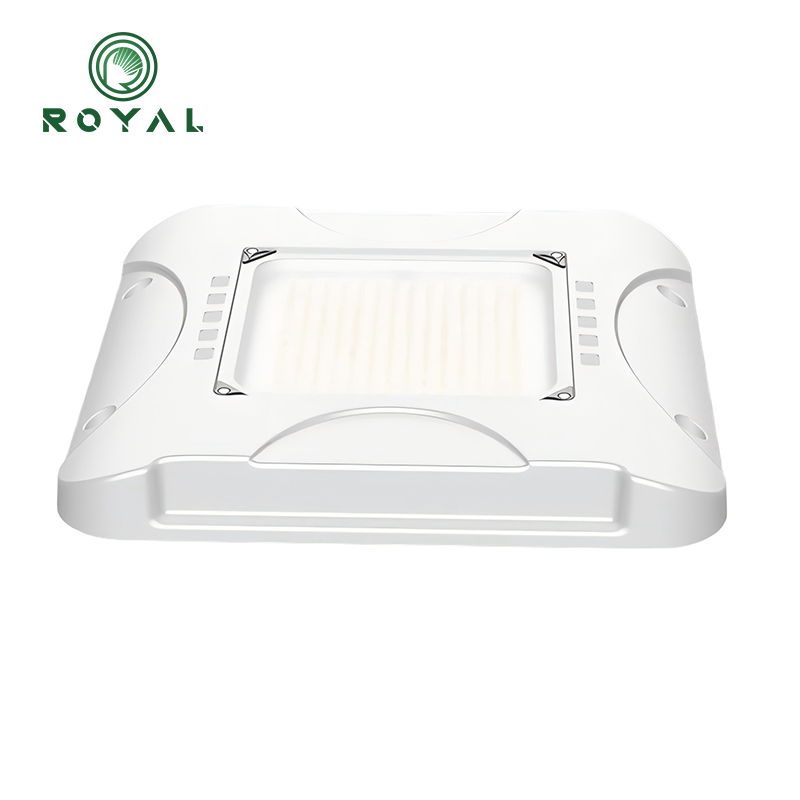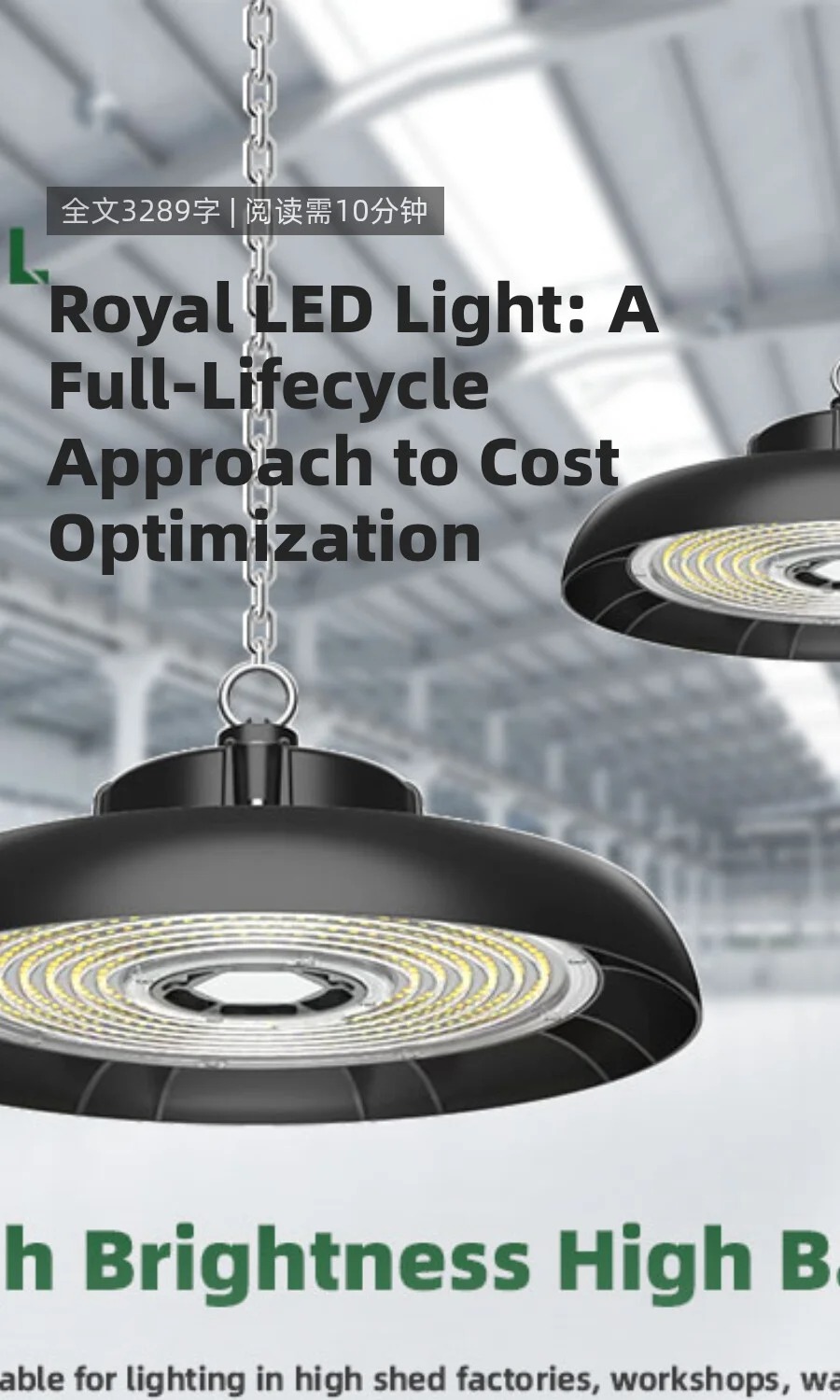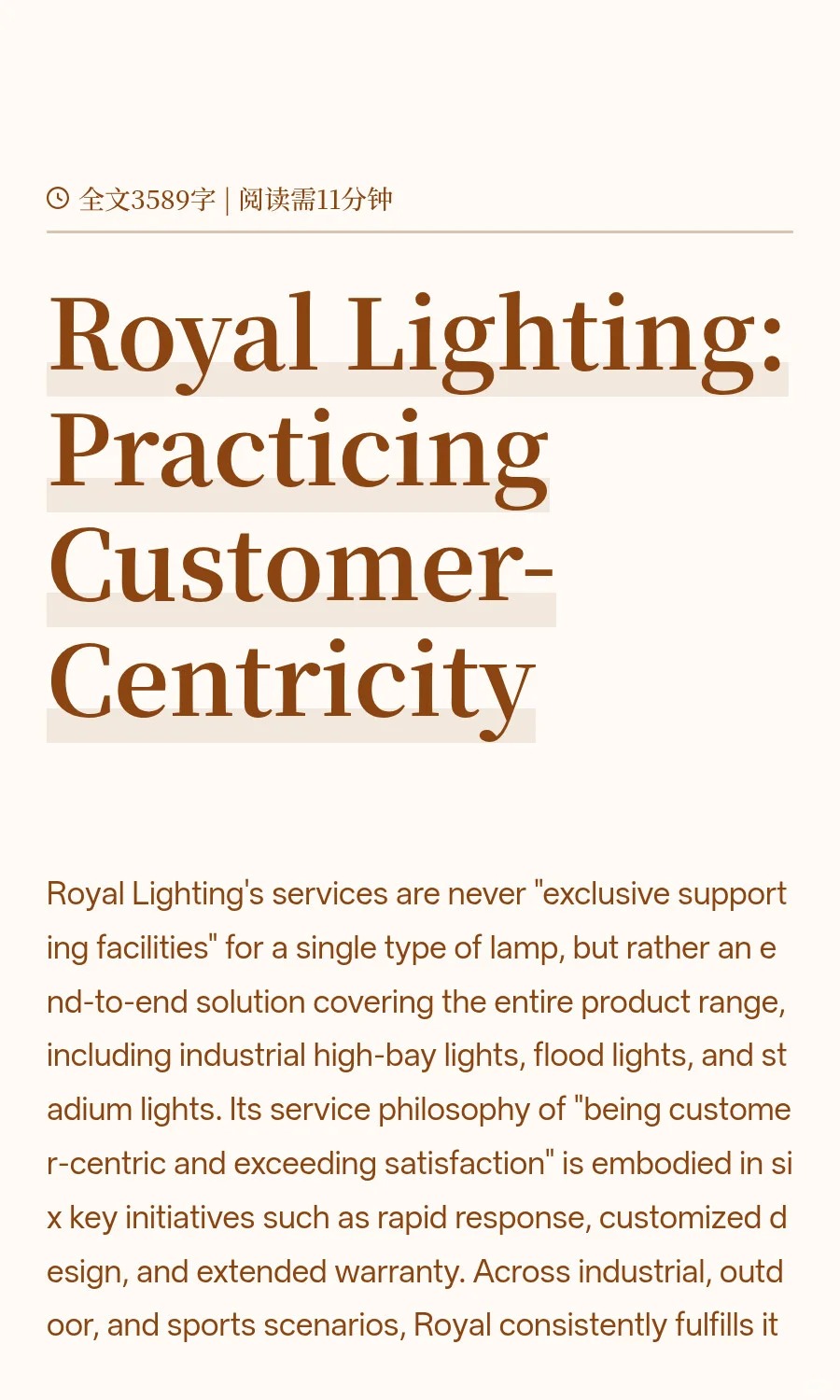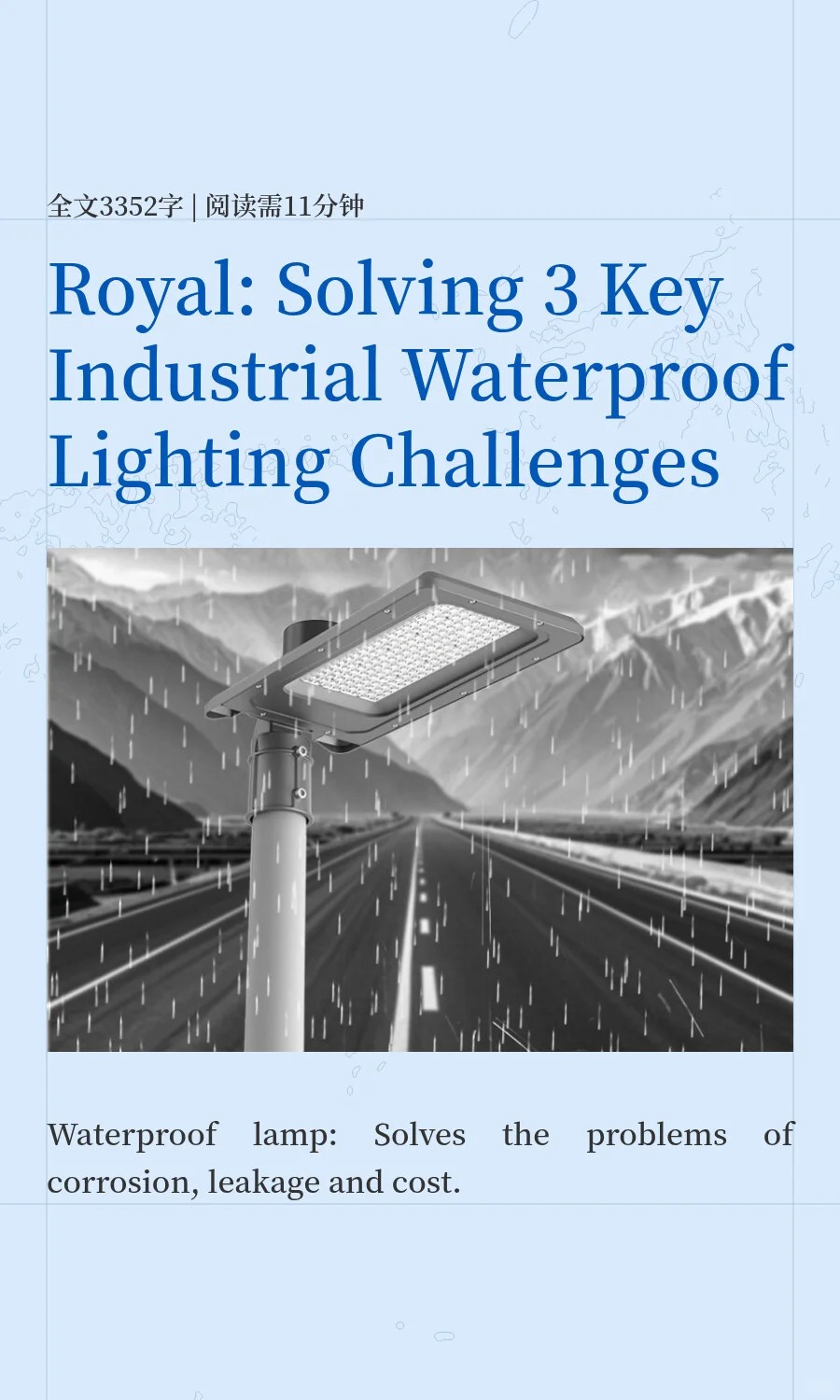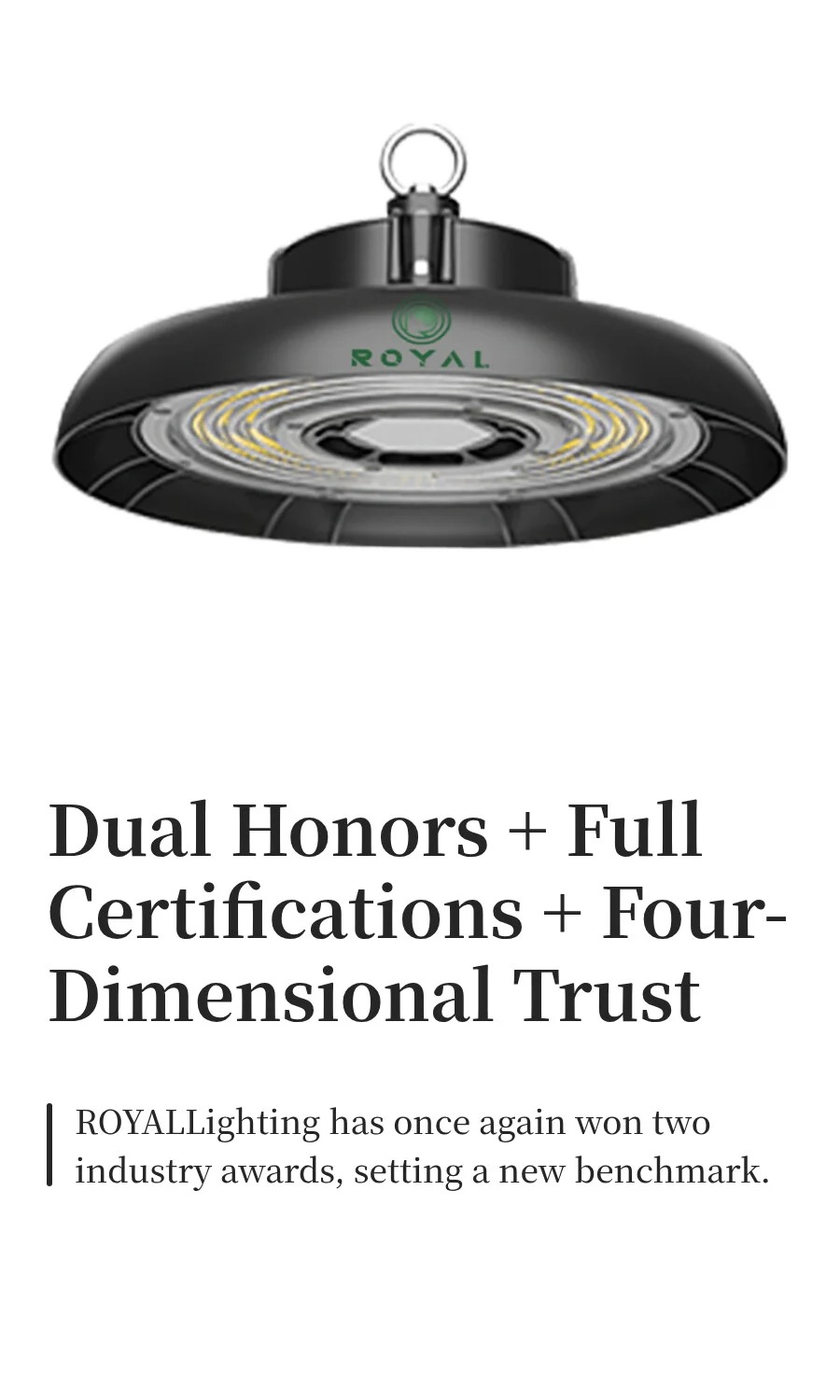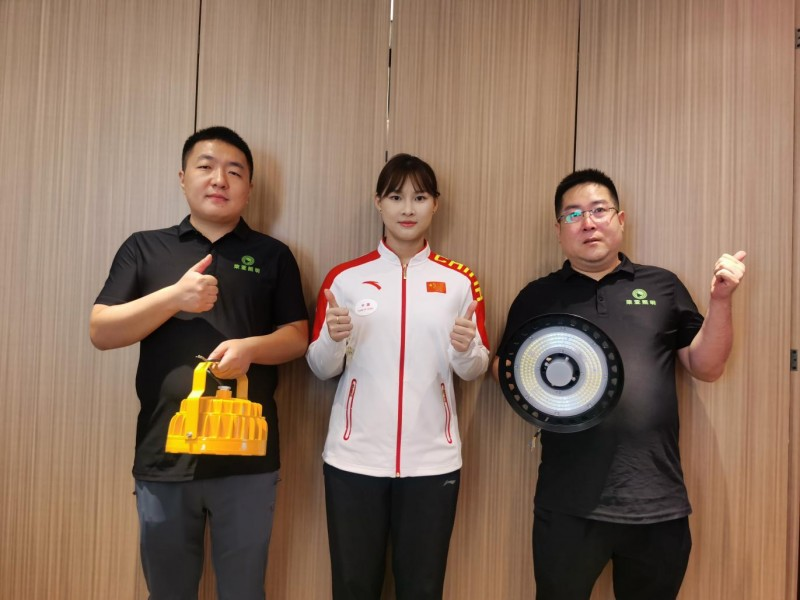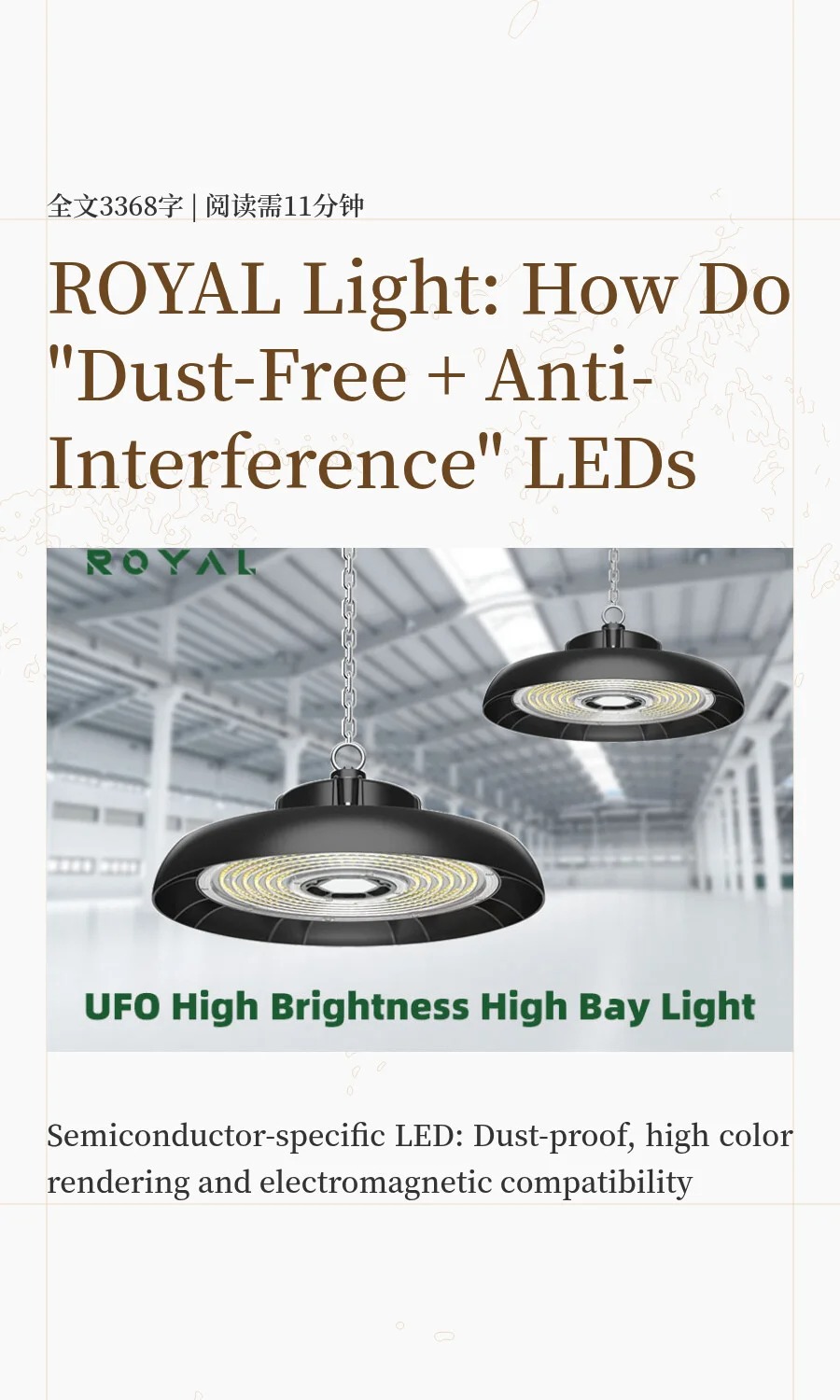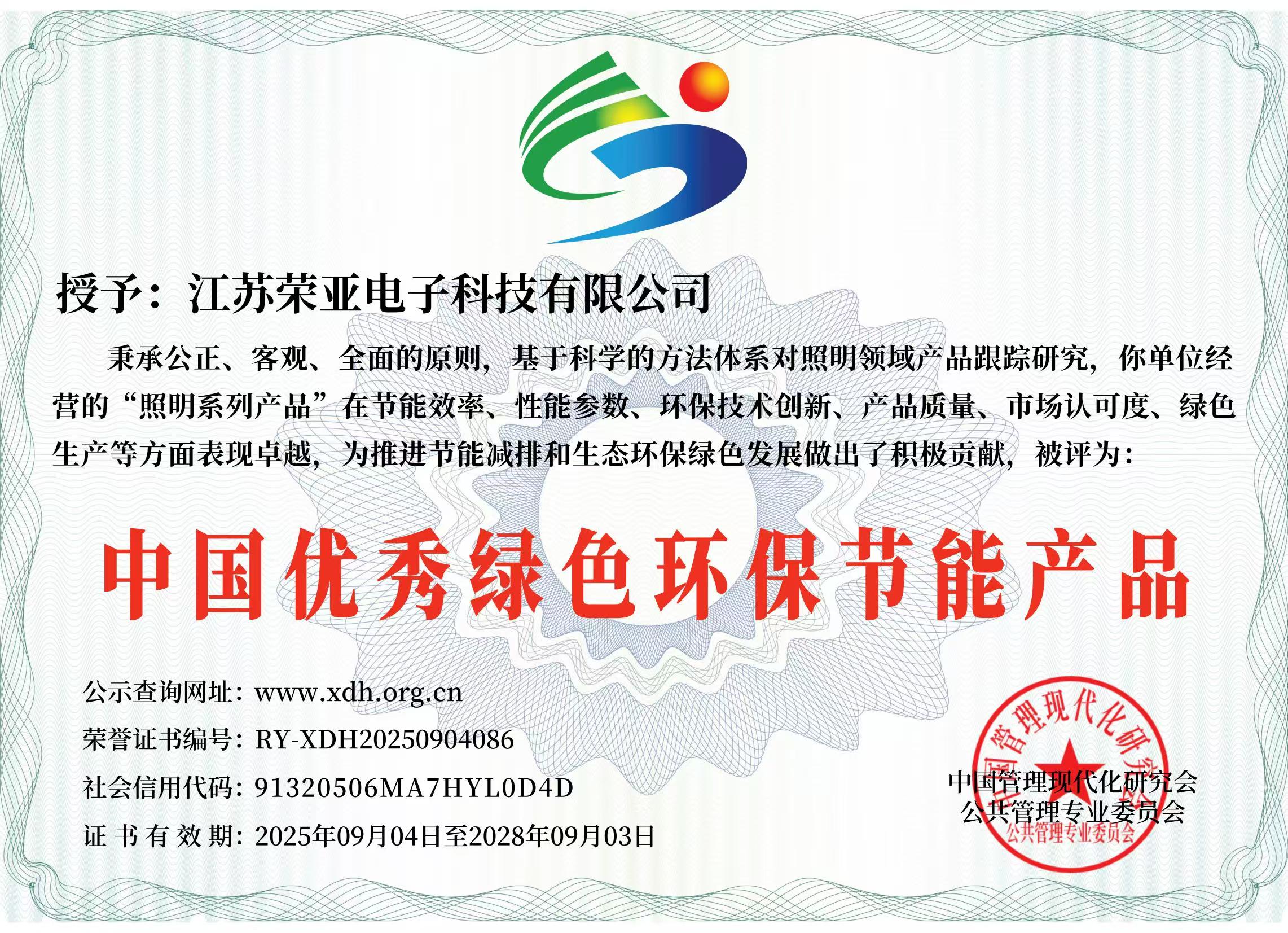In cleanrooms for chip manufacturing and semiconductor packaging, lighting is not just about "illumination"—it's more about "not causing disruptions." A single dust particle could render a chip useless; insufficient color rendering may lead to missed detection of tiny defects; and electromagnetic interference can disrupt the operation of precision equipment. Ordinary industrial LEDs often require frequent cleaning due to dust accumulation or slow down inspection efficiency due to poor color rendering. However, the "semiconductor-specific clean LEDs" launched by ROYAL Light last year have not only reduced the dust contamination rate in workshops by 60% but also increased chip defect inspection efficiency by 30% in a leading chip factory. The core lies in four customized designs tailored to semiconductor scenarios.
Lighting requirements in electronic semiconductor workshops are "delicate tasks" in industrial scenarios, with pain points hidden in details:
· Stringent cleanliness requirements: Most workshops meet Class 10,000 or Class 1,000 standards (no more than 3,520 dust particles per cubic meter). Ordinary LEDs tend to accumulate dust in heat dissipation holes and seams; cleaning them requires disassembly, which may introduce more pollution.
· No room for compromise on color rendering: When inspecting defects on chip pads, lighting needs to accurately reproduce metallic luster and subtle color differences. Ordinary industrial LEDs have a color rendering index (Ra) ≤ 80, which often leads to mistaking "dark streaks" for "normal marks," resulting in a missed detection rate as high as 15%.
· Zero tolerance for electromagnetic interference: Lithography machines and probe stations in workshops are sensitive to electromagnetic signals. The driver circuits of ordinary LEDs may generate electromagnetic radiation, disrupting equipment precision and causing deviations in chip test data.
· Mandatory low heat generation: Semiconductor workshops require constant temperature and humidity (usually 23℃ ± 2℃). Ordinary LEDs generate significant heat, forcing air conditioners to work extra—this not only wastes electricity but also risks disrupting the local temperature-humidity balance.
Targeting these pain points, ROYAL Light has carried out a full-dimensional transformation of the LEDs "from shell to core," with every design tailored to the unique needs of semiconductor workshops:
ROYAL Light designed the lamp's shell as a "fully sealed, hole-free structure":
· It abandons traditional heat dissipation holes and adopts "integrated aluminum extrusion heat dissipation" instead, conducting heat through the lamp body itself. The surface is coated with a nano dust-proof layer, so dust slides off automatically without accumulation.
· The seams of the lamp body are sealed with "medical-grade silicone gaskets," achieving an IP68 protection rating—even dust particles as small as 0.1 microns cannot enter. A "dust-free installation kit" is also provided during installation to avoid dust generation during construction.
To meet the color rendering needs of chip inspection, ROYAL Light specifically uses "high color rendering index lamp beads":
· The color rendering index (Ra) is ≥ 90 (ordinary industrial LEDs only have Ra 70-80), which can accurately reproduce the metallic luster of chips, color differences on pads, and even clearly show tiny scratches as small as 0.1mm.
· The color temperature is fixed at 5000K "neutral white light"—at this temperature, the human eye is most sensitive to "light-dark contrast," allowing inspectors to quickly identify defects without repeatedly adjusting angles.
To avoid interfering with precision equipment, ROYAL Light has implemented "full-link electromagnetic shielding" for the lamps:
· The driver circuit is enclosed in a "metal shield" to reduce electromagnetic radiation; the lamps have also passed EMC (Electromagnetic Compatibility) Class B certification, with radiation levels far below the limits for semiconductor workshops.
· The power cords use "twisted shielded wires" to prevent electromagnetic signals from current fluctuations from interfering with equipment. Even the lamp switches adopt a "contactless design" to eliminate instantaneous electromagnetic pulses during switching.
To maintain constant temperature and humidity in the workshop, ROYAL Light has optimized the driver and heat dissipation:
· It uses a "high-efficiency low-voltage driver" with an electrical energy conversion rate of over 95%, generating 40% less heat than ordinary LEDs. When a 100W lamp is in operation, its surface temperature is only 28℃—close to the workshop's normal temperature—without disrupting the temperature-humidity balance.
· The lamp body is made of "lightweight materials" to reduce heat capacity, preventing the formation of local high-temperature zones even during long-term operation.
The application of ROYAL Light's semiconductor-specific LEDs shows that: the more precise the industrial scenario, the less lighting can be "one-size-fits-all." For example, requirements like "dust-free," "anti-interference," and "high color rendering" in chip workshops are all "shortcomings" of ordinary industrial LEDs. Targeted R&D is essential—not just a simple replacement of lamp beads or addition of gaskets, but a full-chain adaptation covering structure, materials, circuits, and optical design.

